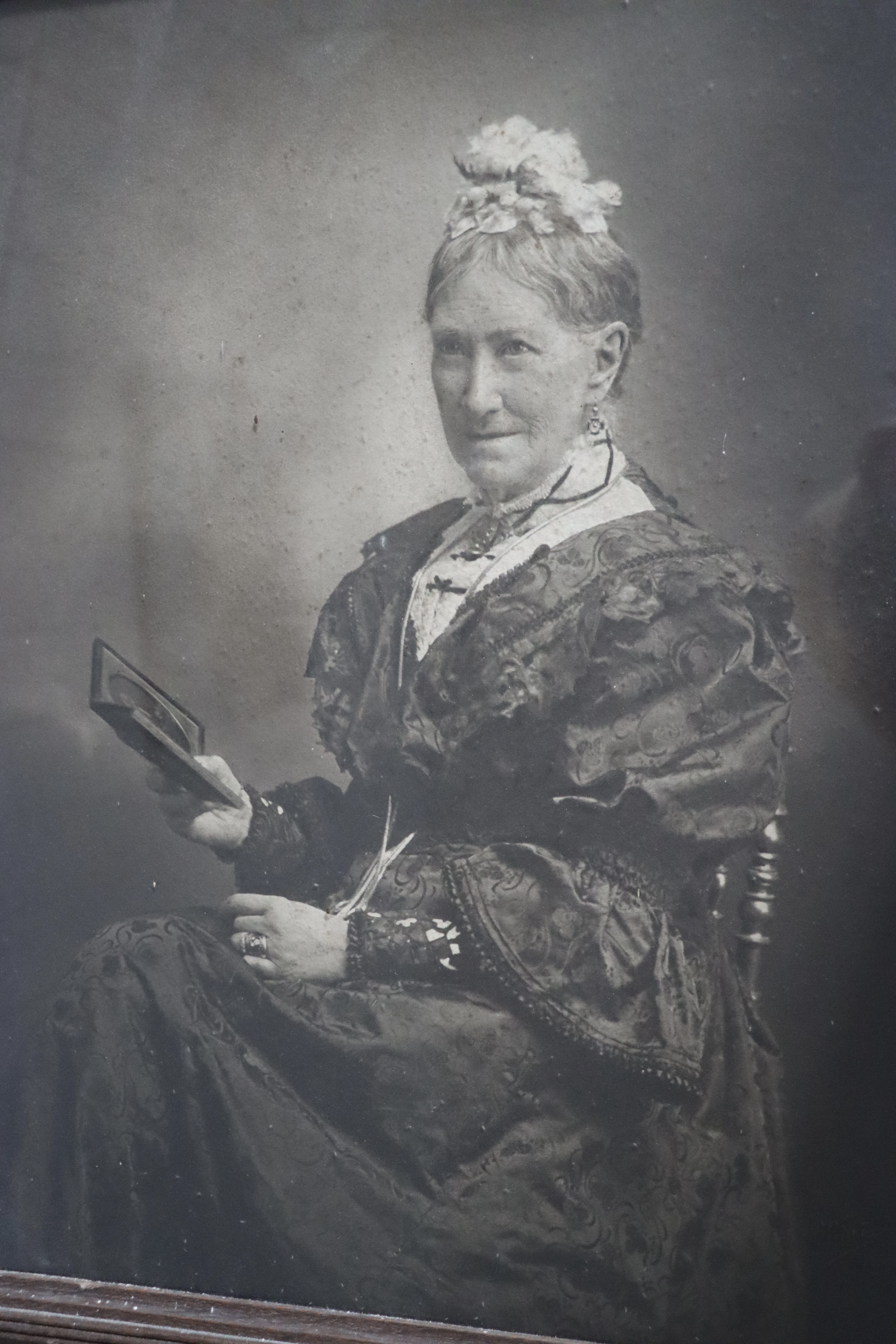
Mary Dains
(1829 – 1913)
“Her sympathies were broadminded to an extent rarely realised”
Background details
The ‘Representation of the People Act’ was introduced into Parliament on 28th February by the William Gladstone, the Liberal Prime Minister. Better known colloquially as the “Third Reform Act’, or in local Suffolk circle terminology, the ‘Government County Franchise Bill’, it sought to establish a uniform franchise across Britain. All the County areas of the country would be aligned with the terms of the 1867 Second Reform Act in urban areas. That is, the right to vote would be extended to working men in rural areas thereby placing them on an equal footing with their peer groups in urban areas. To qualify these men had to either own property or rent unfurnished lodgings to a certain value. Gladstone had deemed the inclusion of women’s suffrage in the Bill would result in certain defeat.
The Third Reform Act was passed, thereby creating a uniform franchise across the country. The rural areas had parity with the 1867 urban householders and lodgers in the boroughs. Forty percent of the men remained without the vote. There was no female suffrage relating to Parliamentary elections. Howerver, small percentage of women had been able to vote in some local elections after the 1867 Act and some subsequent amendments, but only if they were independent ratepayers, single or widowed women.
Mary Dains was a woman worth far more than the content of a few brief lines transcribed and interpreted below. Maybe time will eventually deliver the book, which might attempt to describe her contribution to the Trimleys and surrounding area. In a century which saw muscular Christianity develop across British Empire and beyond, Mary’s considerable inherited wealth[i], combined with her Congregationalist principles, was principally used for the betterment of others through practical, kindly and generous activism. Her fortune also her to enjoy a single life not available to many women; it empowered her to follow her interests, beliefs and philanthropic motivations. Marriage would have removed her financial independence and singular property ownership. Over-arching everything was an intelligence enhanced by freedom of thought obtained by a sound education.
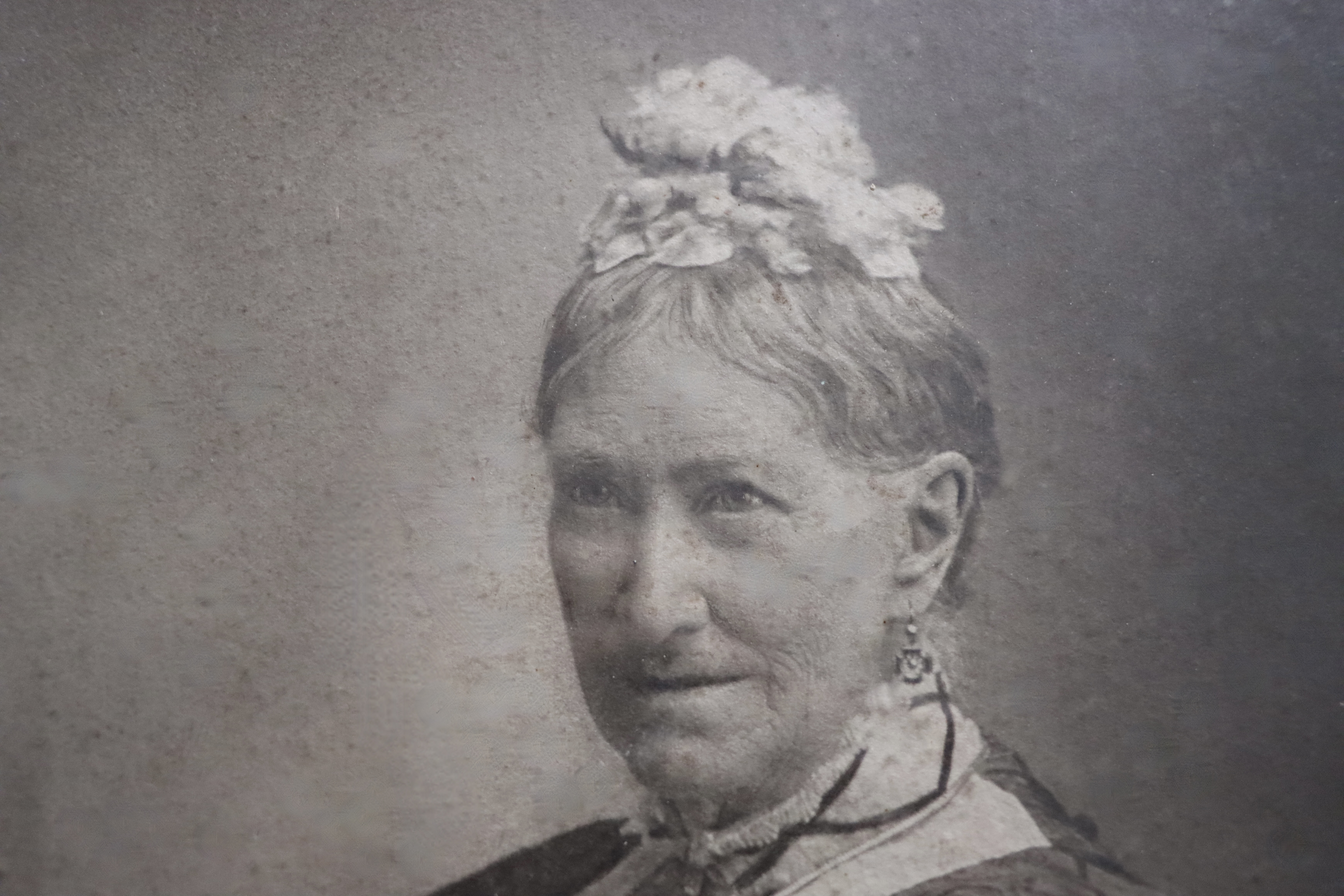
- Detail from the photographic portrait of Mary Dains, currently held in The Free Church, Trimley St. Mary
Nineteenth century Suffolk produced two strong, achieving women who are deservedly well known. Many people are familiar with Elizabeth Garrett Anderson, the first woman to gain a medical qualification in Britain and her sister, Millicent Garrett Fawcett, writer, campaigner and leader of the non-militant National Union of Women Suffrage Societies. They are deservedly famed for their success and activism in their chosen fields, but there were other, equally strong Suffolk women who are owed recognition for their focused energetic work. Mary Dains is one of those women. Emmeline Pankhurst became involved in Women’s Suffrage in 1880 and founded the Women’s Social and Political Union in 1903. [1]
Mary Dains lived the majority of her adult life in Trimley House, next to The Free Church. until her death on 20th February 1913. On the occasion of her death ‘The East Anglian Daily Times’ was quick to publish an obituary extolling the life of a woman who altered and shaped the course of many lives in Trimley and the surrounding villages. The principal focus was on her Christian philanthropy although the confines of the column allowance didn’t permit much evidence of her practical approach to supporting her fellow villagers.
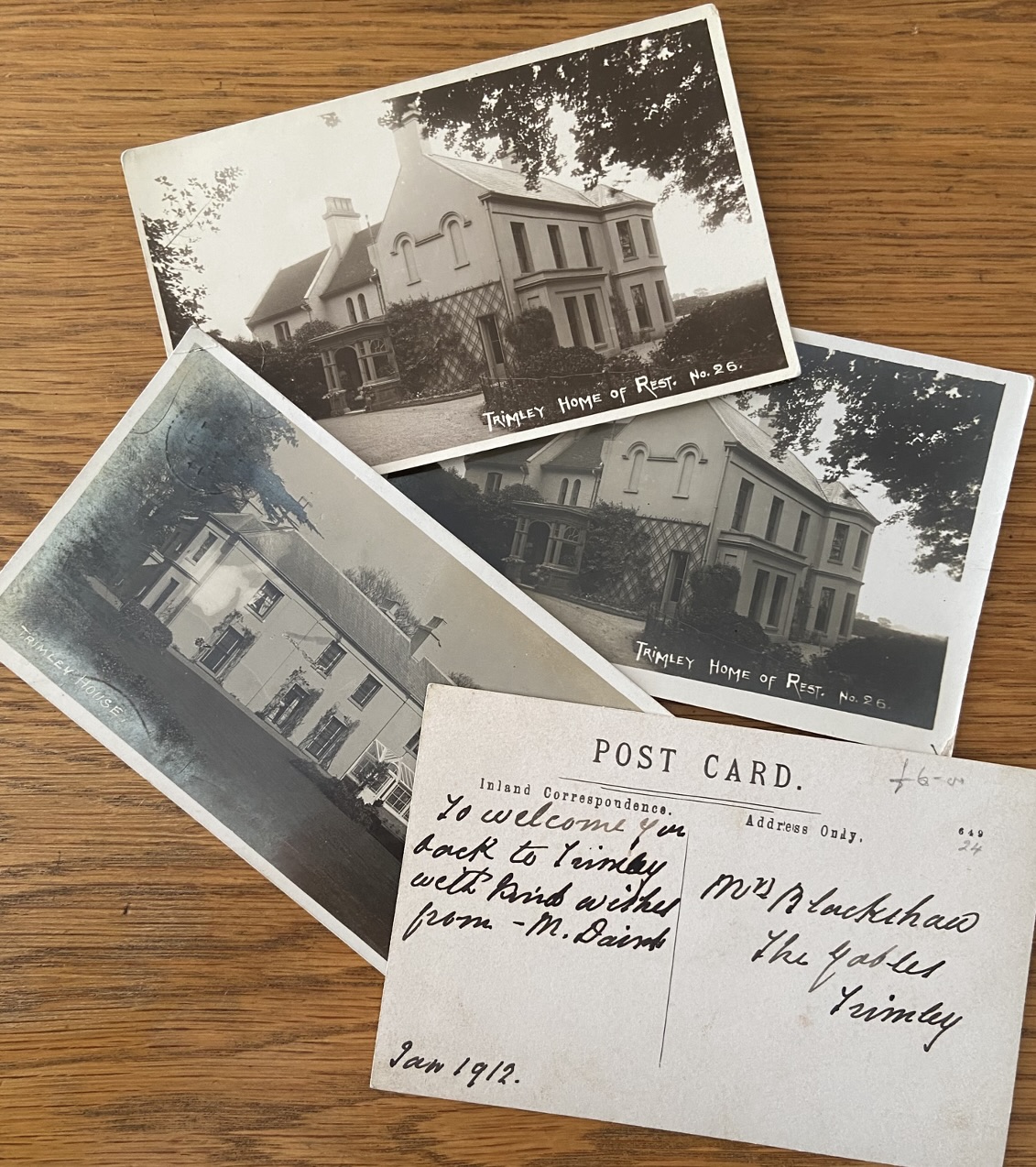
2) Postcards of Trimley House c.1912 – 1918
(Note the personally signed postcard on the top, written shortly before her death.)
There is one evening in her life, Thursday 29th May 1884, which was reported in two local Newspapers and exemplifies her forward thinking and understanding of the women and men in her community. What follows is an account of that evening.
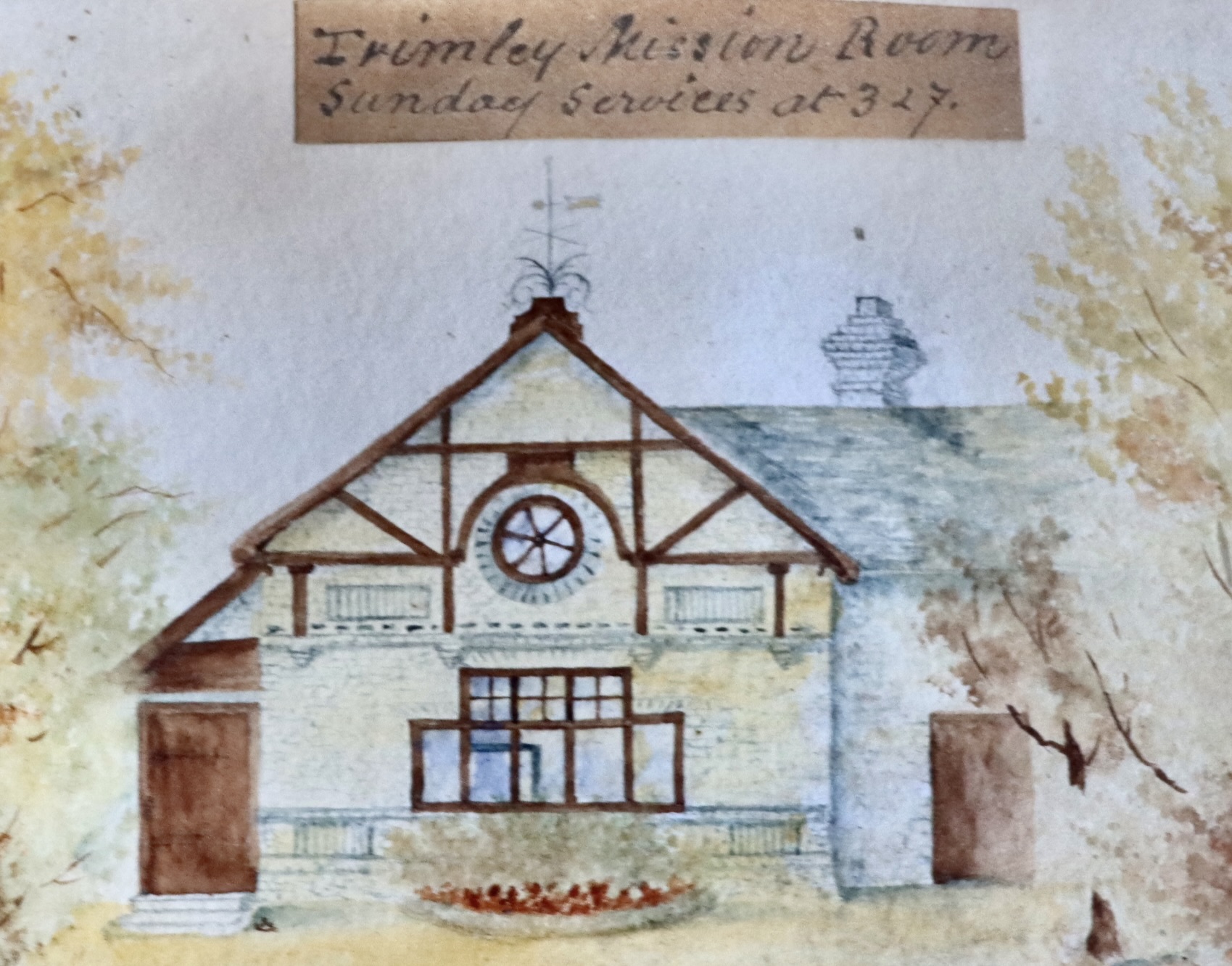 3) Trimley Mission Rooms. (Undated, probably early 20th century)
3) Trimley Mission Rooms. (Undated, probably early 20th century)
Image Courtesy of Trimley Free Church.
It was a cool, overcast evening when a purposeful group of men and one woman attended a meeting in the Mission Room in Trimley St Mary. They were gathered together to discuss and support the weighty and important topic of the Government County Franchise Bill of 1884. Such was the importance of the subject matter, two Ipswich newspapers, ‘The Ipswich Journal’ and the ‘East Anglian Daily Times’ (E.A.D.T.) covered the meeting, each highlighting slightly different details. The E.A.D.T declared itself politically neutral while the Ipswich Journal was of a conservative disposition. By combining both reports it is possible to visualise an expanded picture of who was present, the contribution they made to the debate and the content of their arguments. The writers saw the world through the prism of male advantage. The two reports appear to be part of a series following the public meetings addressing the contemporary issues of suffrage and as yet I haven’t found any others in Suffolk where the opportunity to address the meeting was granted to a female speaker, although this may have occurred.
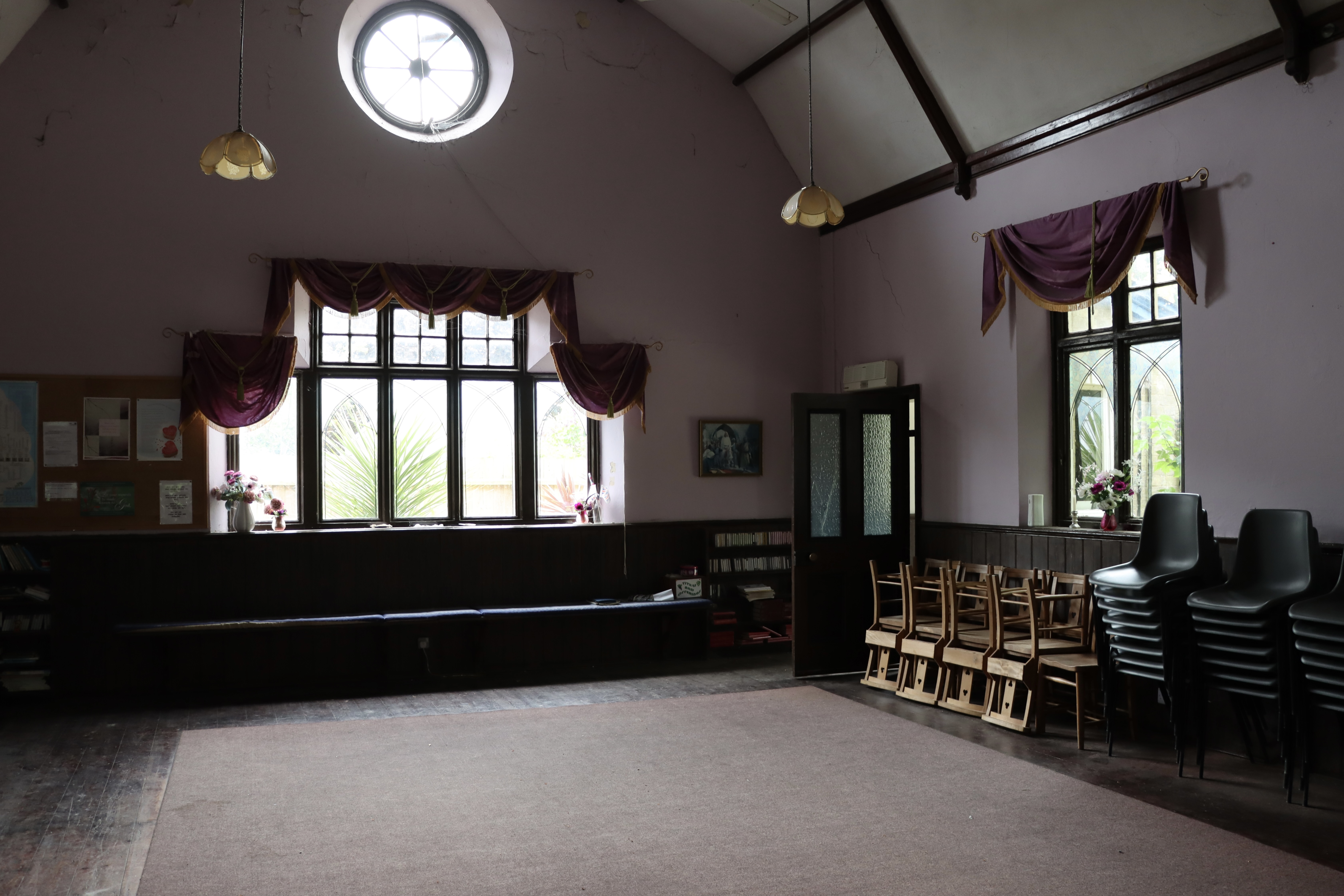
4) Interior of the Free Church, June 2023
The meeting began by singing a hymn and then moved on to discuss the motion of the meeting which was, “To give the labouring classes at Trimley and the neighbourhood the opportunity of showing that they wished to have the vote.” The question was posed to the audience as to whether they were in favour of the bill and did they think that the time had come when they were entitled to have the vote? Furthermore, were they prepared to exercise it for the benefit of the country?”[ii]
This meeting was by no means unique as similar events were held across Britain. The Suffolk Liberal Association organised meetings across rural East Suffolk places such as East Bergholt, Framlingham, Charsfield and many more. The Baptist Chapel in Walton, the neighbouring Parish to Trimley St. Mary, held a meeting in March 22nd which was deemed well attended. The Ipswich Journal described the Trimley event as small but the E.A.D.T. indicated otherwise. I will return to the ‘E.A.D.T. further on.
Who were the attendees? The Ipswich Journal[iii] provided the following names, which are worthy of further investigation. Two of the people have proved untraceable to date but the majority have emerged and these may all be identified were as Liberals or Liberal Supporters.
Firstly, the Host. Miss Mary Dains, the only woman present was someone who worked tirelessly for the local and wider community, in both a secular and ecclesiastical capacity. Her family were Congregationalists of long standing, her father having paid in entirety for the Chapel in neighbouring Falkenham in 1836. Mary established the Mission Rooms and the Free Church in the gardens of her home, Trimley House, a project made possible through the substantial inheritance from her father. Although she was about fifteen years younger than Angela Burdett Coutts[iv], the noted nineteenth century philanthropist, their lives enjoyed many parallels and similarities. As with Angela Burdett Coutts, Mary’s disbursement to those around her was liberal and her contributions to major national charities such as the R.S.P.C.A. substantial. Mary had received an excellent education and all the evidence points to a good understanding of the importance of reading and high standards of literacy. Christian faith and its beliefs were the guidelines by which she lived. Consequently, before permitting the Franchise Bill meeting to take place in the Mission Room, Mary had considered long and hard about temporal nature of the assembly because, as the Ipswich Journal explained, the Mission Room was,
“…a building …that was entirely consecrated to the service of God…but she was encouraged to do so …(by) a friend who told her that the meetings were being held to help those who were struggling to rise, and struggling to be better…’[v]
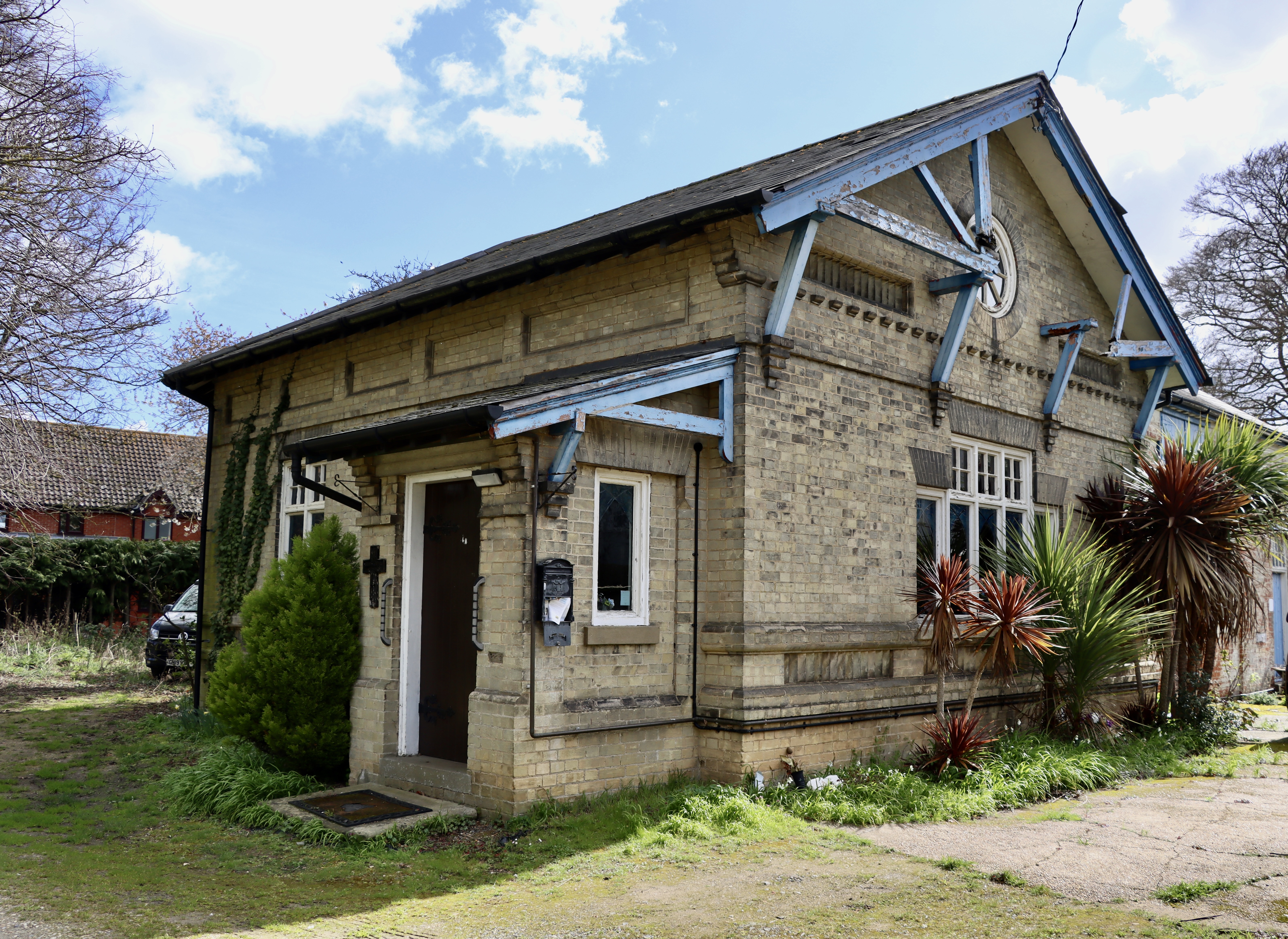
4) View of the Free Church, 2023
Immediately we see how the parameters of her concern and involvement embraced the needs of the working classes. Those ‘struggling to rise’ were always of lifelong concern to her, led by an innate sense of justice. The friend who had written to her was aware of this and encouraged her to open wide the Mission doors to achieve her goals.
But who was the ‘friend’, whose persuasive argument enabled the use of the Room? The East Anglian Daily Times was marginally more forthcoming than the ‘Journal’ and cited a Mr. Harwood. Although there is no further reference to him in either article, research overwhelming points to Henry Fairfax Harwood as being not only Mary’s friend but in fact, a long standing friend of her father, Thomas Dains. His close association with Mary was evident when he was created an Executor of her Will in 1913. A substantial Suffolk landholder, Harwood was a prominent member of the Congregationalist community in Ipswich and Secretary for the Suffolk Congregationalists; as such he held considerable sway with the Chapel goers. Born in 1849, Harwood was also a Magistrate who lived at Tuddenham Hall near Ipswich. His family had been non-conformists in the days of seventeenth century England and in his later years he funded the reprinting of, ‘The History of Congregationalism and memorials of the churches of our order in Suffolk’, which provides insight into the origins of the movement. When talking of his influence and encouragement towards Mary, clearly his opinion was important over the matter of the Meeting room. It might be inferred that Mary was easily subsumed by male authority in such important matters, but this would be to ignore her strength of character and distinct ability to manage her own mind. Liberality of thought nurtured by a sound education provided more than enough confidence and intellectual weapons for this single woman to act by and for, herself.
Sitting in the Chair was the Reverend John Frederick Arthur Hervey. Anyone who knows a little about the Suffolk landed gentry will recognize Hervey as the family name of the Earls of Bristol whose seat was Ickworth Hall, near Bury St Edmunds. Born in 1840, the Reverend Hervey, sometimes referred to as Lord Hervey, was one of twelve siblings whose father was Lord Arthur Charles Hervey, Bishop of Bath and Wells. J.A.F. Hervey, sometimes called Lord John Hervey, was the Vicar of Shotley located in the neighbouring Samford Hundred.[vi] (The border between Trimley St Martin and Shotley runs down the middle of the River Orwell.) In his opening address to the meeting he expressed his belief,which still holds true in 2024:
“Everybody ought to take an interest in political questions”[vii]
Robert Lacey Everett, who described himself as a Yeoman Farmer[viii] had stood unsuccessfully as the East Suffolk Liberal candidate in the election of 1880. He was to prove successful in 1885 and in two subsequent elections. His religious credentials included the role of ‘local preacher’.[ix]
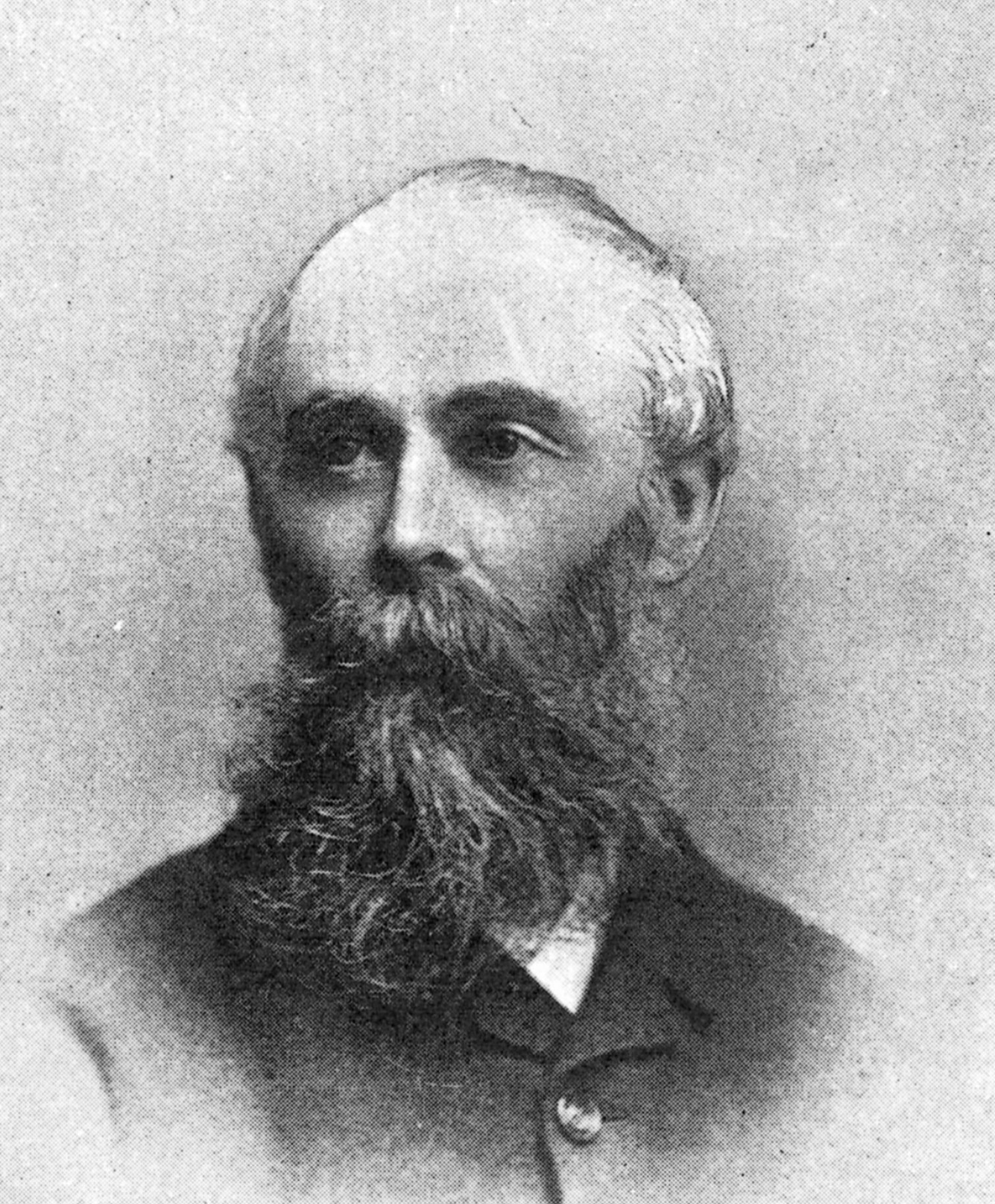
5) Robert Everett Lacey
1833 – 1906
Thirty year old Josiah Collyer was the Congregationalist Minister of Falkenham and he remained in the post until his retirement. The Chapel at Falkenham was dear to Mary Dain’s heart having been constructed at her Father’s behest. (Thomas Dains.) Mary and Josiah were mutually supportive of the other. He also was involved with Trimley St Martin School and sat on the Board as Honorary Clerk. There was a dispute about his eligibility to vote in Trimley in 1880 as ‘The Framlingham Weekly Advertiser’[x] reported:
By 1881 Josiah and his family had moved to ‘The Manse’ on Ranelagh Road in Felixstowe, a distance of about two and half miles from Trimley House. A side effect of being struck off the Electoral register may have heightened his interest in enfranchisement in the shape of the 1884 Third Reform Bill.
A relative newcomer to the area, Mr. George Jacomb was originally from Devon. After purchasing five houses including Trimley Post Office in 1880, he remained in the village until his death. George appeared in diversified roles including Grocer, Draper, Organist and music teacher. In 1885 became an agent entrusted to sell ‘The Ipswich Journal’ in addition to taking orders for advertisements in the same newspaper. As a well-respected member of the community he was also part of the Vestry Committee until 1893.
Two other local men, Messrs. James Cordy of Blofield Farm and George Allen of Great Street Farm employed approximately thirty five agricultural labourers between them. The names mentioned in the E.A.D.T. newspaper article probably refers to them than rather than anyone else. As for the Reverend T. Evans and the Reverend G. Ward, their credentials remain
These were the named attendees printed in the Ipswich Journal but if we turn to the E.A.D.T. we also learn a large number of agricultural labourers and working men were present. The very people who were at the heart of Mary Dain’s concerns and of course , those for whom the Speakers were present..
During the course of the meeting two of the labourers made cogent comments, which were reported. Mr. Durrant (of Trimley St Mary) said the men were in a state of political serfdom until they achieved the vote and they had no freedom as citizens until they had the right to vote in the making of the laws they were called upon to obey. This last was greeted with applause. At the end of the evening a second working man, Mr. Bugg, endorsed the aim of the meeting, which was to give the working man in rural areas the vote.
The bulk of the evening’s presentation was given by Robert Everett Lacey who was granted a golden opportunity to practice his oratory skills in preparation for the next General Election when he would stand as the Liberal candidate. He certainly appears to have known how to work the room, pitching his persuasiveness in one breath towards the clerics present saying, “He hoped the time would come when the labourers would fee a pride and pleasure to looking to the village church as their church – the people’s church, not the parson’s church.’
And in the next breath he turned to the working men as, “it appeared to him that men ought to be able to brew beer in their own houses without having to pay a tax for brewing. [HEAR, HEAR]”
But for me the most cogent person in the room was the host, the sole woman attendee, Mary Dains. After all the men had spoken, the Chair, the Reverend Hervey turned and asked Miss Dains to address the meeting. This says something about women’s position in these matters but let’s take heart from her presence and her words.
Mary proceeded with her address byr stating she aimed to be the Working Man’s friend and that she was sorry there were not more of the Labourer’s wives present, because she believed the women would help the men to arrive at a proper understanding of the question. Notwithstanding her friendship with the men discussing the issue, Mary didn’t hesitate to say those endorsing the motion were slow to acknowledge the necessity for women to vote and, “Even the good men on the platform did not seem very hearty about it [LAUGHTER] and one man had said, ‘Let the men go first’, which she thought was not very gallant.”
She continued to further her argument for woman’s suffrage by providing a practical example of the inequity towards female householders. A variety of male collectors would call on her asking for payment of her Poor Rate or other local ‘taxes’. Mary didn’t think anyone would be happy if she gave the reply that there was nothing to be had because the occupant was a woman. When it came to voting for electoral candidates, her heart was, “as warm as any man’s.” It was unfair that a man who had a £12 p.a. house might vote but that a woman could not. In the event of the men of Trimley receiving the vote, she hoped they would vote for the candidate who advocated women’s rights. This last statement was greeted with applause and cries of, ‘Here, here!’ Continuing, Mary said Mr. Everett combined the qualities which the men might like to see in the man who should represent them and also one who was in favour of Sunday Closing and of Women’s Suffrage. The speech concluded by those men present who were enabled to vote, being exhorted to exercise their vote in a, “manly and straightforward way.” Applause followed.
The results of the meeting were to be forwarded to Lord Rendlesham, the Conservative M.P for Suffolk East. (This seat was abolished the following year and in the General Election, Robert Everett was returned for the replacement constituency of Woodbridge.)
The reporting of this speech, which was expressed as ‘admirable’, reflecting the positive support given by the anonymous writer towards Mary’s expressed beliefs. Both reports conveyed respect and esteem for Mary and illuminated certain aspects of her character namely, intelligence, people skills and an urgent compassion for her working neighbours.
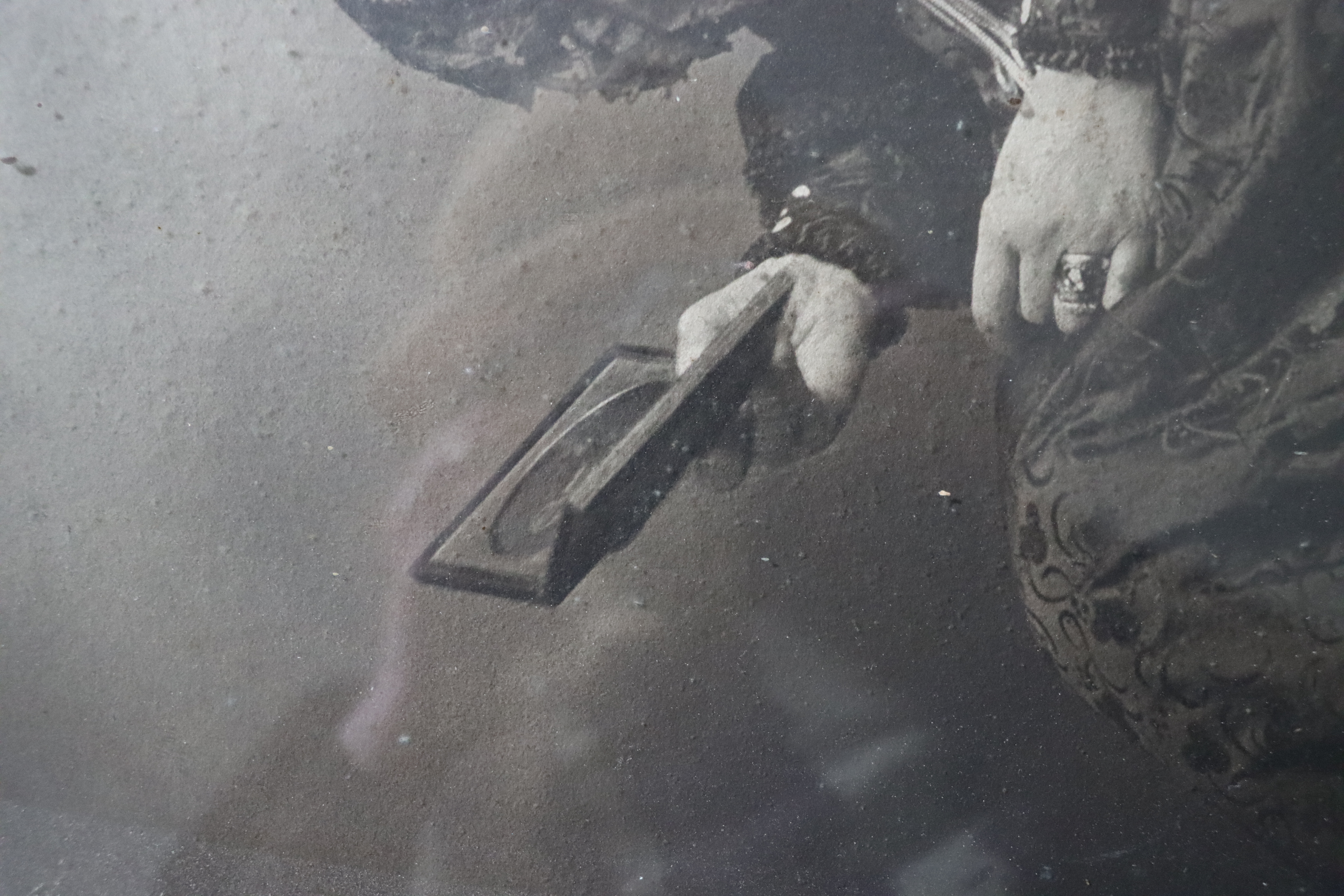
6) Detail from the photographic portrait of Mary Dains who is holding a framed photograph of an elderly man, possibly her father.
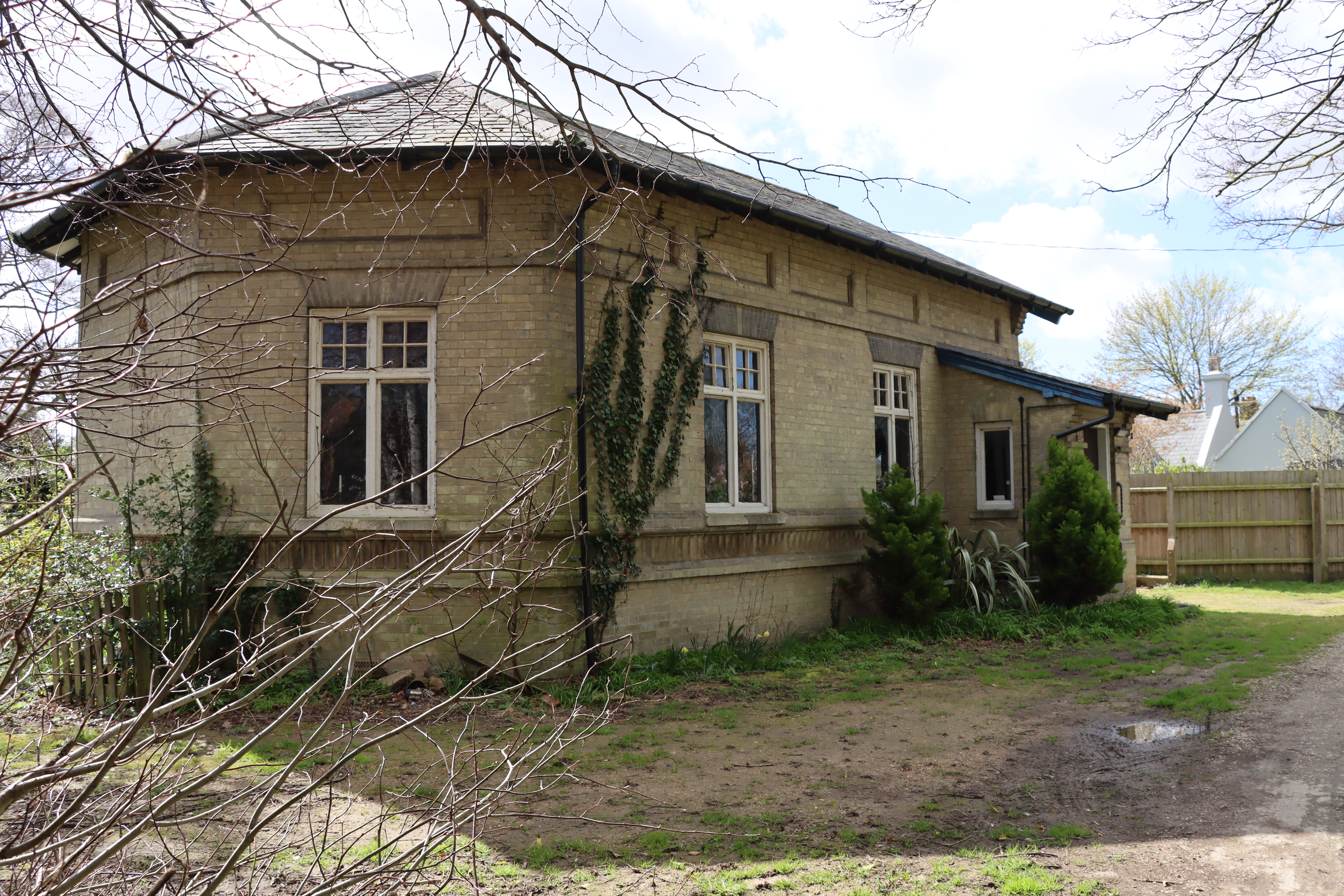
7) View of The Free Church from behind, 2023
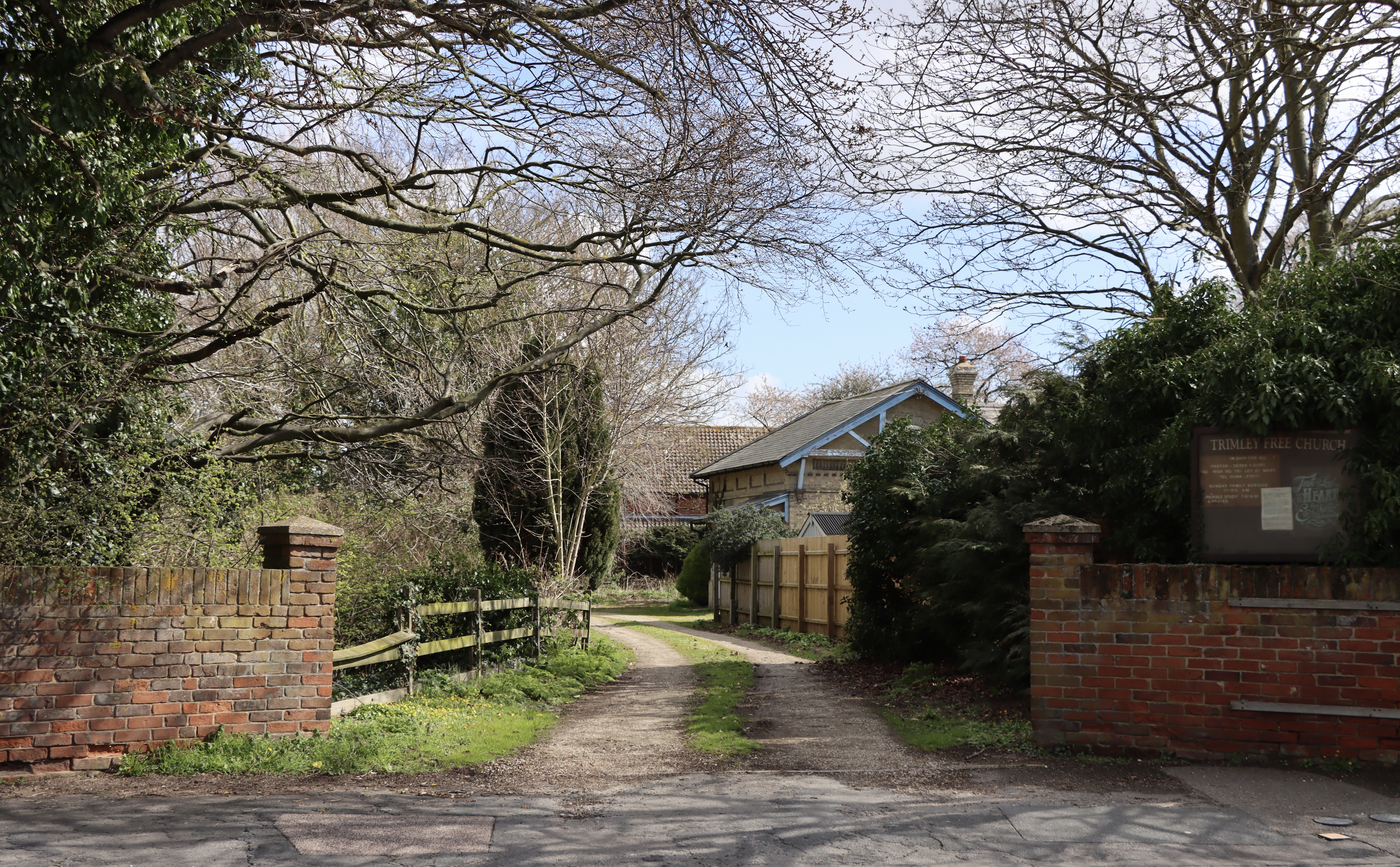
8) Entrance to The Free Church and the Manse, 2023
(Prior to the sale of The Manse)
………………………………………………………………………………………………………………………………………………….
If you have any comments or would like to be part of this Trimley St. Martin project, please contact me at:
trimleystmartinrecorder@gmail.com
LR 24/06/2024
[1]https://www.parliament.uk/about/living- heritage/transformingsociety/electionsvoting/womenvote/overview/startsuffragette-/
[i] Something in the region of £35,000 (approximately £3,334,873 in 2023 terms
[ii] Ipswich Journal
[iii] sic
[iv] Angela Burdett Coutts, 1815 – 1906, Victorian philanthropist.
[v] Ipswich Journal
[vi] St Mary’s Church Shotley, Church Guide. Tricker, Roy
Rev. Hervey was the incumbent of Shotley for fifty seven years.
[vii] Ipswich Journal
[viii] 1881 Census
[ix] 1891 Census
[x] 9th October 1880 Framlingham Weekly Advertiser
Fascinating, Liz.
Thank you for sharing. I so enjoyed this.
All the best
Simon http://www.theastonishingstoryofmaryaliceberners.com
Sent: Sunday, June 23, 2024 at 9:05 PM
LikeLike
Thank You, Simon. I wondered if the Vicar of Shotley stayed overnight somewhere or if it was too dark to take a pony and trap home again. Any thoughts? Liz
LikeLike
Do you have any idea or evidence of when the mission hall was built.
I am one of the Trustees and we are about to restore the building for community use.
LikeLike